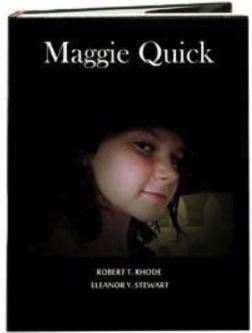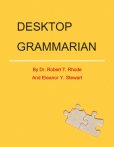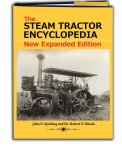 .
.
by Robert T. Rhode & Eleanor Y. Stewart
Book Factory 2011
978-1-59672-107-4
Age 8 to 12 360 pages
.
“Maggie Quick is a nine-year-old in a small Irish-American town in the Midwestern United States. Irish immigrants to the U.S.A. brought forms of witchcraft with them. Maggie discovers that she has special powers and that she alone must try to save her village from destruction by evil forces. By embracing nature and by trusting her instincts, she begins to transcend the restrictive society surrounding her. She pours out her hopes, her questions, and her fears to three wise women, who guide her toward understanding—in the nick of time!”
Opening
“Maggie wafted down the walk. She hadn’t meant to. She knew that such things were possible in fairy tales, but not in real life—especially hers. Here’s how it happened”
The Story
Maggie Quick learns she has special powers, handed down from generations of witches. Her grandmother, her great aunt, and Winnie, an ostracized woman and ex-best friend of the latter 2 woman. All have special powers that most people would call witchery. These three woman secretly guide Maggie in learning about her past and her newfound abilities. Maggie can understand and talk to animals, especially squirrels, and sees the little people living in her vegetation. An evil power is brewing, a force that will destroy not only Maggie’s village but also her entire family. The ruler of the good witches, a rarely seen protective goddess named Brigid, sends word by way of a banshee that Maggie is to lead the forces of good against evil. This unseen evil has been using fire to destroy barns around the village. It plans to destroy the entire village, if not stopped. On that fateful night, Maggie will learn more than the powers of good over evil. She will learn a larger family secret.
Review
First, let me say that Maggie Quick physically rivals any traditionally published book in workmanship. It is a well-constructed, beautifully bound, and jacketed book. The subject matter, though it could be dark and eerie, will not cause any nightmares for the middle grade kids for which it was written. The paranormal story begins with three thugs many believe are burning down barns, yet no one has ever seen them and others swear they were somewhere else at the time. Then Maggie’s father’s barn burns, and while neighbors look on, Maggie is caught with matches in her hand, but is she guilty? Not even her parents can fully let the possibility go until late in the story.
Maggie is a young girl who secretly has been wafting—gliding along rather than walking, often at breakneck speeds. Her conversations with the squirrels and especially the little people are some of the most humorous lines in the story. When Maggie first meets Michael Millikin, one of the little people—Michael vehemently states the proper term is good people—Maggie tells Michael that Millikin is Winnie’s last name. Michael replies,
“Yes, yes! I’m from a smaller branch of the family!”
Michael’s sense of humor is odd to Maggie but I loved it. He tells Maggie he is a cobbler and when she asks what a cobbler is, Michael says,
“I make eyes, tongues, heels, and toes. I’m a shoemaker! Get it? If you were an elf, I’d make you a shoe, but I’d only make you the right one. [Maggie asks why] Because I refuse to make the wrong one! Besides, why would I waste my time making the shoe that’s left when the other one’s gone?”
The story moves at a steady pace, letting you soak in the information that is new and enjoy the story. Maggie initially sneaks over to Winnie’s house for witch lessons. Not until Grandma Quick makes a confession can Maggie openly visit Winnie. Soon, Maggie’s brother, William, learns to waft and also begins lessons with Winnie. Mom, concerned her children are spending so much time with a woman not days earlier the family strictly avoided, decides to watch these lessons and is soon learning to waft. She turns out to be an interesting student. Winnie’s lesson will not show kids anything they could replicate, nor anything stronger than what they would have read in Harry Potter.
Maggie Quick surprised me. First, I am not a big fan of paranormal stories, but this one I love. Also, the overall quality of the actual book, and then the quality of the story—both excellent. Normally, I refuse to review anything older than one year, as I try to keep the reviews current, yet once in a while a story grabs me and I cannot wait to let everyone know about a secret gem. Secret in that the story is not on a best-seller list—though it should be—nor heavily marketed by traditional economics. The only disappointment is the book trailer. Watching, one has no idea what this story is about and it fails miserably in its goal of peaking interest in reading Maggie Quick. Wafting is but a starting point—one which the trailer should have gotten to faster and then moved on.
Girls will love Maggie Quick, as all the major roles and the hero are all female. That is not to say boys will not enjoy the story, as I know they will. The secondary characters are wonderful creatures be they the good people, squirrels, Brigid’s brigade, or the assortment of family members and friends. A remarkably well-written story is really enjoyable to anyone with an interest. Adults will find Maggie Quick a wonderful story as well and should not skip this merely because it is a “children’s book.”
MAGGIE QUICK. Text copyright © 2011 by Dr. Robert T. Rhode and Eleanor Y. Stewart. Publisher copyright © 2011 by the Book Factory, Dayton, OH.
Buy Maggie Quick at Amazon—B&N—Book Factory—your local bookstore.
.
Learn more about Maggie Quick HERE.
.
Meet the co-author, Robert T. Rhode, at his website: http://roberttrhode.org/
Meet the co-author, Eleanor Y. Stewart, at her facebook: https://www.facebook.com/eleanor.y.stewart
Find more books at the Book Factory’s website: http://www.bookfactory.com/
Also by Dr. Robert T. Rhode

Desktop Grammarian for Editors

The Steam Tractor Encyclopedia: Glory Days of the Invention that Changed Farming Forever
Also by Eleanor Y Stewart

Desktop Grammarian for Editors

An American in Oz: Discovering the Island Continent of Australia
.
.

Filed under: 5stars, Favorites, Library Donated Books, Middle Grade Tagged: Anthropomorphism, Book Factory, Brigid's Brigade, Eleanor Y. Stewart, good vs.evil, little people, Maggie Quick, Robert T. Rhode, squirrels, witches





Hey Gus,
this is a really nice illustration. I love all the different characters on the team.
plenty of action all over with lots of little things going on that kids love to pick out. the School Mag should be happy with this as a cover.
cheers
Thanks Frank. It was a fun one to draw up. Touch wood, it comes out nicely on the cover.